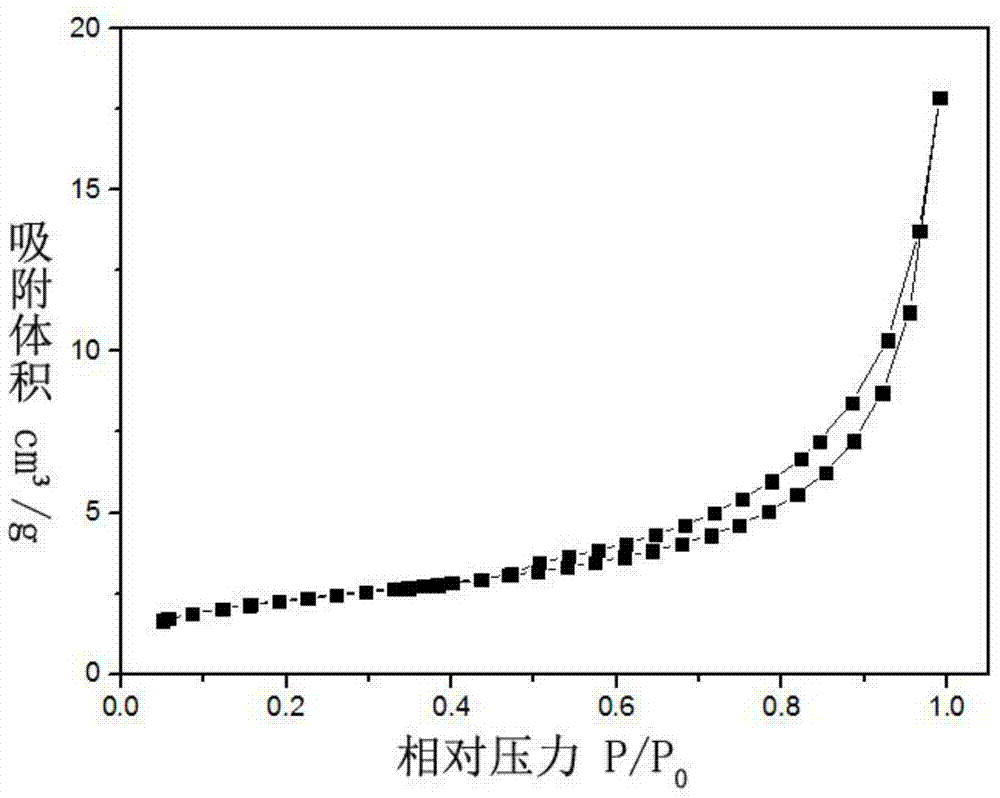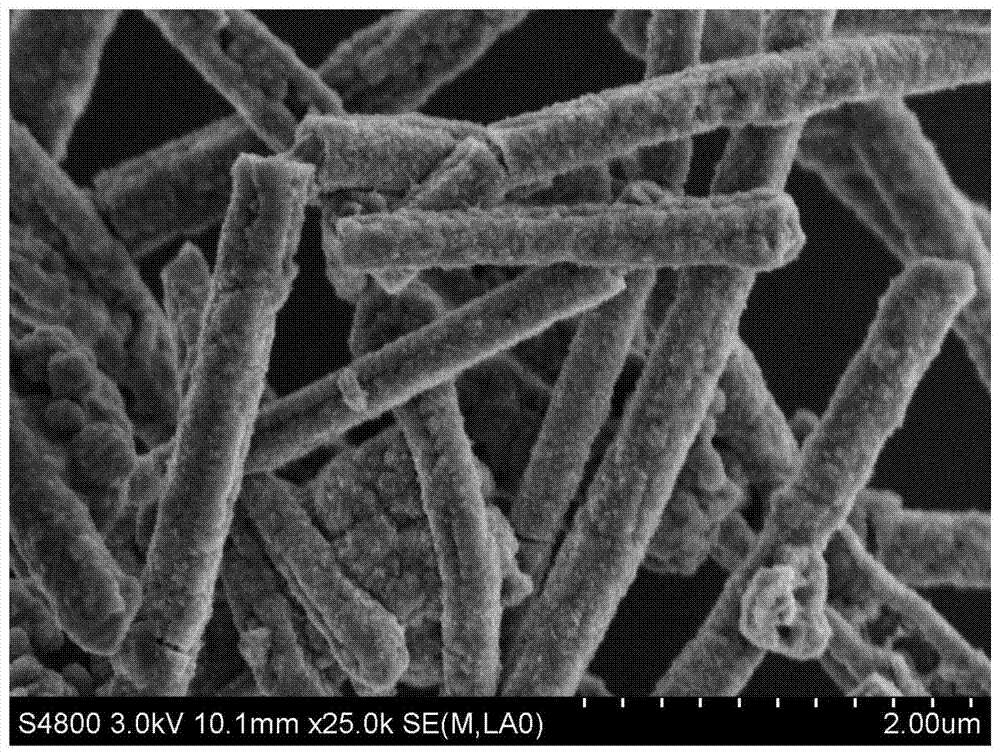Cuprous ion-doped zinc sulfide copper nanowire visible-light-driven photocatalyst as well as preparation method and application thereof
A technology of cuprous ion and zinc copper sulfide, which is applied in the direction of physical/chemical process catalysts, nanotechnology for materials and surface science, nanotechnology, etc., to achieve the effects of convenient operation, cost reduction, and simple preparation process
- Summary
- Abstract
- Description
- Claims
- Application Information
AI Technical Summary
Problems solved by technology
Method used
Image
Examples
Embodiment 1
[0024] The cationic surfactant cetyltrimethylammonium bromide (CTAB) and the organic amine solvent hexadecylamine (HDA) were completely dissolved at 180°C to obtain solution A; copper acetylacetonate was used as the copper source to completely dissolve Dissolve in solution A and stir for 3 to 5 minutes to obtain dark green solution B. Add a silicon chip coated with noble metal platinum as a catalyst in solution B, put it in a hydrothermal kettle, react at 180°C for 12 hours, and cool to room temperature, washed 3 to 5 times, and the obtained solid was vacuum-dried at 80° C. for 2 hours to obtain linear copper nanowires.
[0025] Take 2mmol of copper nanowires and 20mL of water in a 50mL beaker, ultrasonically disperse, add 5mmol of zinc acetate and 14mmol of thiourea, and stir evenly. Transfer to microwave reactor. The heating time is 10min, the microwave power is 1200w, the initial pressure is 35bar, the reaction temperature is 150°C, and the reaction time is 30min, after co...
Embodiment 2、3、4
[0031] The only difference from Example 1 is that the amount of copper nanowires used is different. Examples 2, 3, and 4 are 1mmol, 3mmol, and 5mmol respectively. The obtained products have the same phase composition, similar microscopic appearance, and certain differences in specific surface area. Among them, 2mmol addition has the highest hydrogen production activity.
Embodiment 5、6、7、8、9
[0033] The only difference from Example 1 is that the zinc source used is different. Embodiments 5, 6, 7, 8, and 9 are respectively zinc nitrate, zinc chloride, zinc sulfate, zinc acetylacetonate, and zinc dihydrogen phosphate. The composition is the same, but there are differences in specific surface area and hydrogen production activity. Among them, the sample with zinc acetate as the zinc source has the highest hydrogen production activity.
PUM
| Property | Measurement | Unit |
|---|---|---|
| specific surface area | aaaaa | aaaaa |
Abstract
Description
Claims
Application Information
 Login to View More
Login to View More - R&D
- Intellectual Property
- Life Sciences
- Materials
- Tech Scout
- Unparalleled Data Quality
- Higher Quality Content
- 60% Fewer Hallucinations
Browse by: Latest US Patents, China's latest patents, Technical Efficacy Thesaurus, Application Domain, Technology Topic, Popular Technical Reports.
© 2025 PatSnap. All rights reserved.Legal|Privacy policy|Modern Slavery Act Transparency Statement|Sitemap|About US| Contact US: help@patsnap.com



